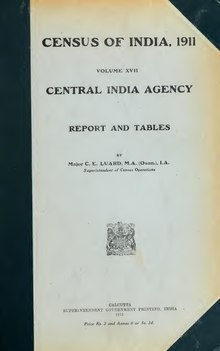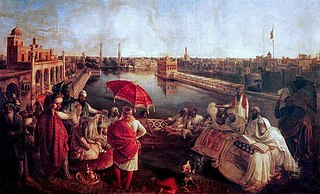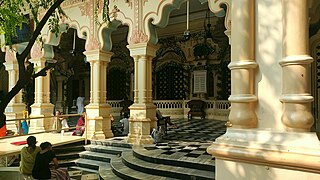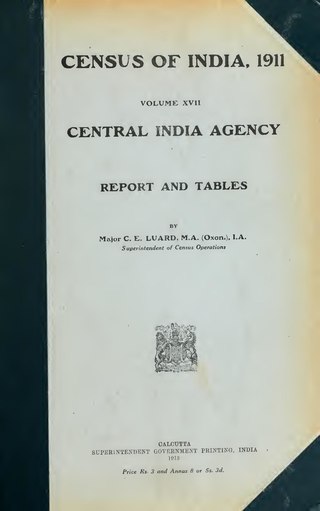British Rule

The decennial census of India has been conducted 15 times, as of 2011. While it has been undertaken every 10 years, beginning in 1872 under Viceroy Lord Mayo, the first complete census was taken in 1881. [1] Post 1949, it has been conducted by the Registrar General and Census Commissioner of India under the Ministry of Home Affairs, Government of India. All the censuses since 1951 were conducted under the 1948 Census of India Act, which predates the Constitution of India. [2] The 1948 Census of India Act does not bind the Union Government to conduct the census on a particular date or to release its data in a notified period. The last census was held in 2011, whilst the next was to be held in 2021 before it was postponed due to the COVID-19 pandemic in India. [3] The next census will be held after the 2024 general election. [4]

List of censuses conducted in India after independence:

India is the most populous country in the world with one-sixth of the world's population. According to estimates from the United Nations (UN), India has overtaken China as the country with the largest population in the world, with a population of 1,425,775,850 at the end of April 2023.

Punjab, also known as the Land of the Five Rivers, is a geopolitical, cultural, and historical region in South Asia. It is specifically located in the northwestern part of the Indian subcontinent, comprising areas of modern-day eastern-Pakistan and northwestern-India. Punjab's major cities are Lahore, Faisalabad, Rawalpindi, Gujranwala, Multan, Ludhiana, Amritsar, Sialkot, Chandigarh, Shimla, Jalandhar, Patiala, Gurugram, and Bahawalpur.

Sikhs are an ethnoreligious group who adhere to Sikhism, a religion that originated in the late 15th century in the Punjab region of the Indian subcontinent, based on the revelation of Guru Nanak. The term Sikh has its origin in the Sanskrit word śiṣya, meaning 'seeker', 'disciple' or 'student'. According to Article I of Chapter 1 of the Sikh Rehat Maryada, the definition of Sikh is: Any human being who faithfully believes in

Hinduism is the third largest religion in Australia consisting of more than 684,002 followers, making up 2.7% of the population as of the 2021 census. Hinduism is the fastest growing religion in Australia mostly through immigration. Hinduism is also one of the most youthful religions in Australia, with 34% and 66% of Hindus being under the age of 14 and 34 respectively.

The Dominion of India, officially the Union of India, was an independent dominion in the British Commonwealth of Nations existing between 15 August 1947 and 26 January 1950. Until its independence, India had been ruled as an informal empire by the United Kingdom. The empire, also called the British Raj and sometimes the British Indian Empire, consisted of regions, collectively called British India, that were directly administered by the British government, and regions, called the princely states, that were ruled by Indian rulers under a system of paramountcy. The Dominion of India was formalised by the passage of the Indian Independence Act 1947, which also formalised an independent Dominion of Pakistan—comprising the regions of British India that are today Pakistan and Bangladesh. The Dominion of India remained "India" in common parlance but was geographically reduced. Under the Act, the British government relinquished all responsibility for administering its former territories. The government also revoked its treaty rights with the rulers of the princely states and advised them to join in a political union with India or Pakistan. Accordingly, the British monarch's regnal title, "Emperor of India," was abandoned.

Hinduism is the largest religion in India. According to the 2011 Census of India, 966.3 million people identify as Hindu, representing 79.8% of the country's population. India contains 94% of the global Hindu population. The vast majority of Indian Hindus belong to Shaivite and Vaishnavite denominations. India is one of the three countries in the world where Hinduism is the dominant religion.

Sikhismin Canada has nearly 800,000 adherents who account for 2.1% of Canada's population as of 2021, forming the country's fastest-growing and fourth-largest religious group. The largest Sikh populations in Canada are found in Ontario, followed by British Columbia and Alberta. As of the 2021 Census, more than half of Canada's Sikhs can be found in one of four cities: Brampton (163,260), Surrey (154,415), Calgary (49,465), and Edmonton (41,385).

Religion in India is characterised by a diversity of religious beliefs and practices. Throughout India's history, religion has been an important part of the country's culture and the Indian subcontinent is the birthplace of four of the world's major religions, namely, Buddhism, Hinduism, Jainism, and Sikhism, which are collectively known as native Indian religions or Dharmic religions and represent approx. 83% of the total population of India.

Roughly 8.6 per cent of India's population is made up of "Scheduled Tribes" (STs), traditional tribal communities. In India those who are not Christians, Muslims, Jews or Zoroastrians are identified as Hindus. The reason being varied beliefs and practices allowed in Hindusim and according of Hindusim as a geographical identity than merely Religious ones. Though, many of the Scheduled Tribes have modes of worship not typical to mainstream Hindusim but ontologically form part of the cultural practices of the land, as Nature or ancestral worship, with varying degrees of syncretism.

The 2011 census of India or the 15th Indian census was conducted in two phases, house listing and population enumeration. The House listing phase began on 1 April 2010 and involved the collection of information about all buildings. Information for National Population Register (NPR) was also collected in the first phase, which will be used to issue a 12-digit unique identification number to all registered Indian residents by Unique Identification Authority of India. The second population enumeration phase was conducted between 9 and 28 February 2011. Census has been conducted in India since 1872 and 2011 marks the first time biometric information was collected. According to the provisional reports released on 31 March 2011, the Indian population increased to 1.21 billion with a decadal growth of 17.70%. Adult literacy rate increased to 74.04% with a decadal growth of 9.21%. The motto of the census was Our Census, Our Future.

Registrar General and Census Commissioner of India, founded in 1961 by the Government of India Ministry of Home Affairs, for arranging, conducting and analysing the results of the demographic surveys of India including Census of India and Linguistic Survey of India. The position of Registrar is usually held by a civil servant holding the rank of Joint Secretary.

This is a list of national population and housing censuses.
In 2011, the Bangladesh Bureau of Statistics conducted a national census in Bangladesh, which provided a provisional estimate of the total population of the country as 142,319,000. The previous decennial census was the 2001 census. Data were recorded from all of the districts and upazilas and main cities in Bangladesh, including statistical data on population size, households, sex and age distribution, marital status, economically active population, literacy and educational attainment, religion, number of children etc. Bangladesh and India also conducted their first joint census of areas along their border in 2011. According to the census, Hindus constituted 8.5 per cent of the population as of 2011, down from 9.6 per cent in the 2001 census.

The Census of India was conducted periodically from 1865 to 1941 during British rule in India. The censuses were primarily concerned with administration and faced numerous problems in their design and conduct ranging from the absence of house numbering in hamlets to cultural objections on various grounds to dangers posed by wild animals to census personnel. The sociologist Michael Mann called the census exercise "more telling of the administrative needs of the British than of the social reality for the people of British India". The differences in the nature of Indian society during the British Raj from the value system and the societies of the West were highlighted by the inclusion of "caste", "religion", "profession" and "age" in the data to be collected, as the collection and analysis of that information had a considerable impact on the structure and politics of Indian society.
The 1951 census of India was the ninth in a series of censuses held in India every decade since 1872. It was also the first census after independence and Partition of India. 1951 census was also the first census to be conducted under 1948 Census of India Act. The first census of the Indian Republic began on February 10, 1951.
The Socio Economic and Caste Census 2011 (SECC) was conducted for the 2011 Census of India. The Manmohan Singh government approved the Socio Economic and Caste Census 2011 to be carried out after discussion in both houses of Parliament in 2010. SECC-2011 was not done under the 1948 Census of India Act and the Registrar General and Census Commissioner of India was not entrusted to do the same. The SECC 2011 was conducted in all states and union territories of India and the first findings were revealed on 3 July 2015 by Union Finance Minister Arun Jaitley. SECC 2011 is also the first paperless census in India conducted on hand-held electronic devices by the government in 640 districts. The rural development ministry has taken a decision to use the SECC data in all its programmes such as MGNREGA, National Food Security Act, and the Deen Dayal Upadhyaya Grameen Kaushalya Yojana. SECC 2011 was the first caste-based census since 1931 Census of India, and it was launched on 29 June 2011 from the Sankhola village of Hazemara block in West Tripura district.

The 2021 census of India, or the 16th Indian census, is to be conducted in two phases, a house listing phase and a population enumeration phase. Although initially the house listing was to begin in April 2020 along with the updating of the National Population Register, and the population enumeration on 9 February 2021, they have been effectively postponed to after the 2024 general elections. Initially the house listing was to be conducted between April and September 2020, with population enumeration in February 2021 and a revision round in March 2021. The reference date was to be 1 March 2021 in most of the states and 1 October 2020 for Jammu and Kashmir and some areas of Himachal Pradesh and Uttarakhand. On 2 January 2023, Additional Registrar General of India communicated to all the states that the date of freezing of administrative boundaries had been extended till 30 June 2023. The 16th census can only begin three months after the administrative boundaries have been frozen. The completion of the census in its two phases takes at least 11 months, so the possibility of the completion of this decennial census exercise in 2023 or early 2024 is ruled out, as general elections are due in April 2024.